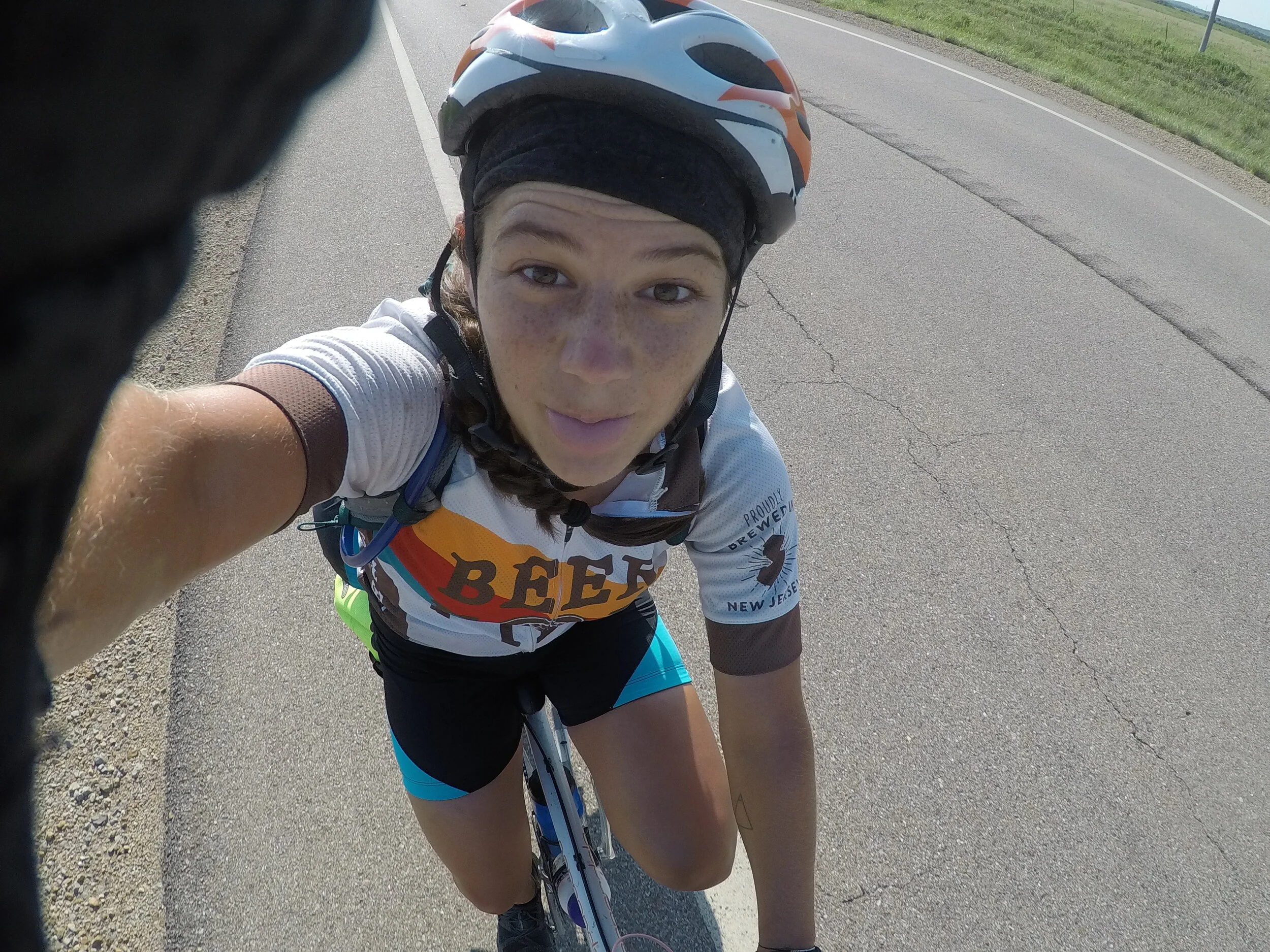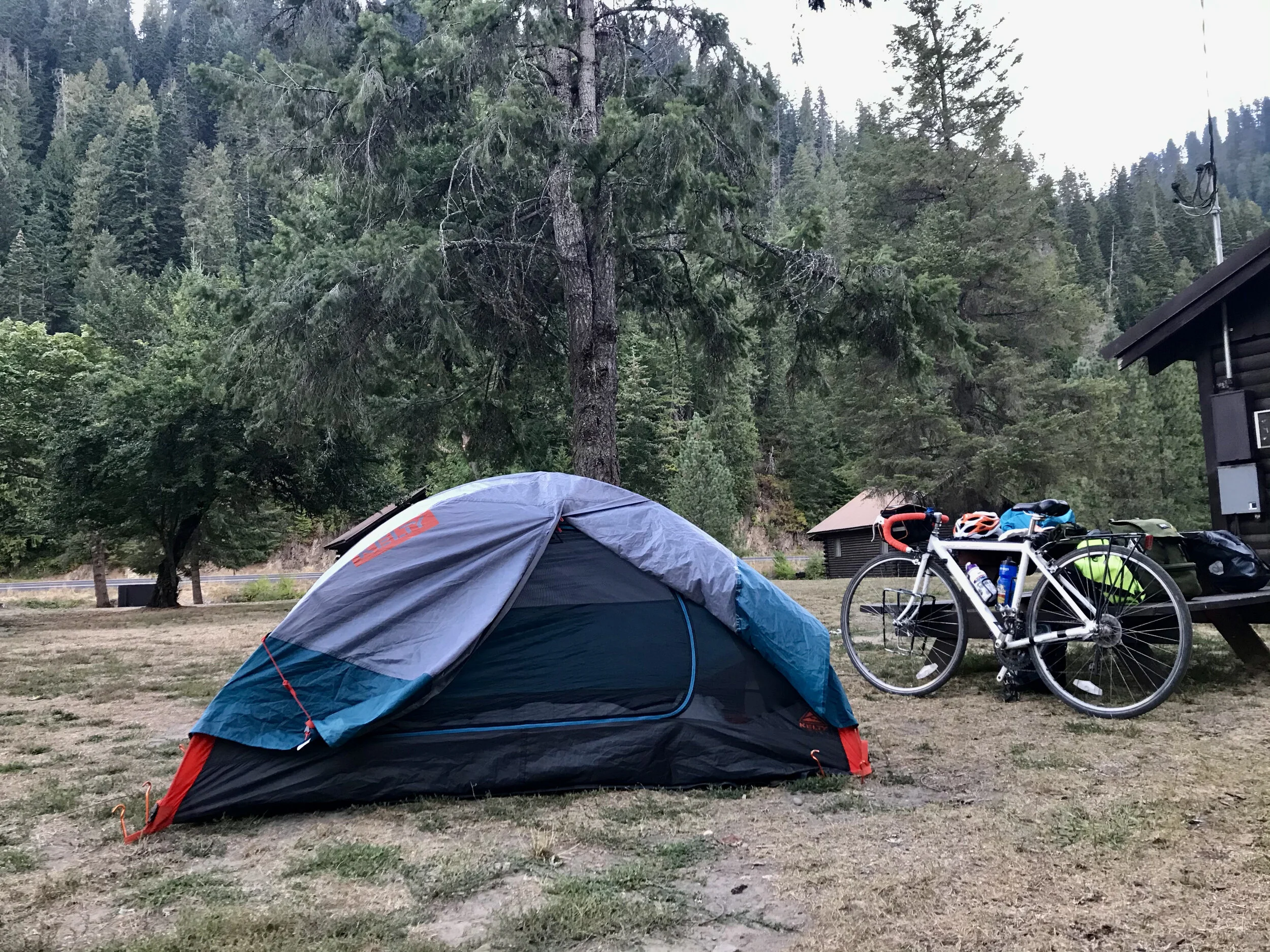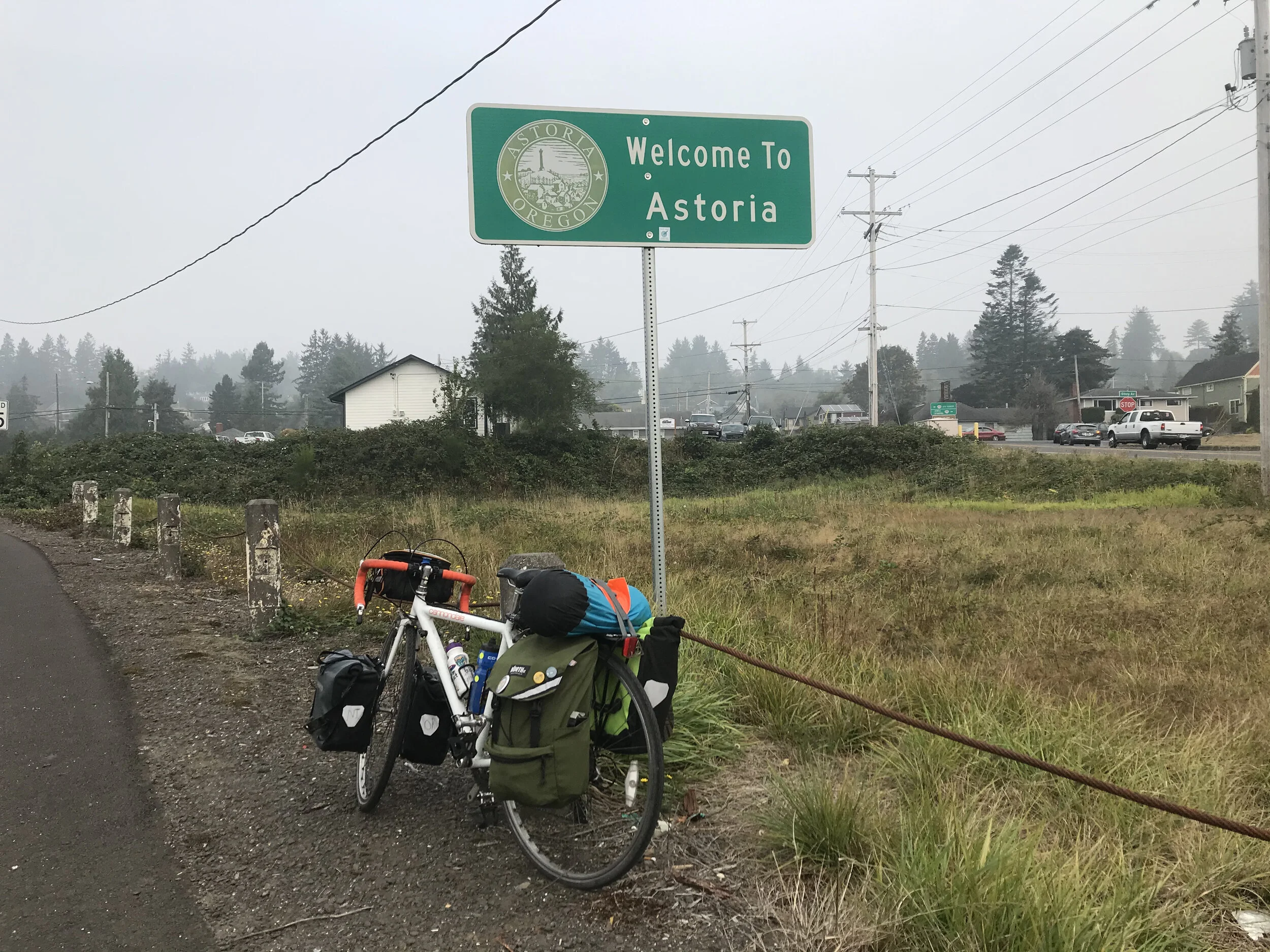Cycling through Chaos: FAQs
When setting out to do ride my bike across the country, I had a lot of questions. Even through immense digging on multiple outlets a few questions were never quite answered. On top of that, Coronavirus welcomed other obstacles that simply no one had the solutions for.
This post is a combination of questions I frequently received as well as questions I wanted answered before I left. I hope this helps the aspiring cyclist nail down their logistics or at least put some of the guess work to bed for the reader.
Q1. Navigation: Paper maps or digital?
After reading multiple blogs and listening to hours of podcasts, I still asked the question: how did people navigate? I learned, it boils down to preference and both routes (pun intended) have their advantages and disadvantages. I ended up using both, even though paper maps overwhelmed me, I knew I needed something else in case my technology wasn’t reliable. I never used the paper maps (until I met Mason, he only used maps). I ended up recycling them in Kentucky, they were bulky and unnecessary (IMO).
Before I set off, I had a route planned via Google Maps route function. You can download your route and follow it with step by step directions. I used this the first day, when Pete and I set off from Cinnaminson riding the Schuylkill River trail through Valley Forge State Park (halfway) to the finish at Douglasville PA. The rest of the week, Pete used his phone to navigate us to State Parks through Western PA via google maps bike function. Once Pete left, I realized this method drained my battery and I needed a viable solution.
I ended up downloading the Bicycle Route Navigator App and purchased a few digital maps ($10.00 a map) to connect me from Western PA to the Great Allegheny Passage (GAP) to get me to Pittsburgh. From Pittsburgh, I connected on the Underground Railroad from Pittsburgh to West Virginia, Ohio, Illinois, Indiana, Kentucky. Once I got to Missouri, I connected on the Transamerica Route. These maps aren’t exactly turn-by-turn and you don’t need it running the entire time to follow. For me, this was the best solution to keep an eye on the route, see expected resources and keep my phone battery alive.
Q2. How do you power your electronics?
I learned some cyclists installed a Dynamo hub to their front wheel. This enables you to power electricity by pedaling between 11mph and 15mph to generate charges for your phone, a small tablet, and lights on your bike. The estimated cost of this is around $300-500.
Although I very heavily weighed this option, the biggest deterrence for me was if anything goes wrong with it. Being an already mechanically challenged person, I didn’t want to add more difficulty to my setup in case a spoke broke or other malfunctions happened. So, I went against this.
Instead, I had a small extra battery with me that offers 5 full recharges. At first, I had my extra battery hooked up to a solar panel on my back rack. This maintained the charge and later learned it took way too much solar power for it to charge the battery pack. This was only an issue twice on the trip.
Each night, I had access to an outlet. Whether I was camping, staying at a hosts, or dining out. I charged my phone until it was 100% and turned it off to sleep, charged my watch and turned it off, and made sure my battery pack had all charges. This wasn’t possible every night but enough for 2 days until I was guaranteed a recharge.
Q3. Where did you sleep?
I knew I wanted to blend camping and staying with hosts as much as possible. That being said, I understood COVID would bring unique challenges to both options. The first week, Pete and I strictly camped at state parks and everyday we’d look at the maps to see what distance we were comfortable with, what parked looked the nicest and then set off.
Figuring out where to sleep day to day became exhausting and eventually as I grew more comfortable and confident with my mileage I started to use one day a week to bulk plan sleeping arrangements for the coming week. The first line of defense I used was to check the route for open campsites within a reasonable distance. If this wasn’t a viable option, I then searched Warmshowers, a website (now app) for hosts in the area and blast texted a few inquiring if they were available to host me those upcoming nights or if they new of places to camp. I then checked to see if there were any city parks or motels around in case I got stuck.
Only a few times I rode when I didn’t exactly know where I was going to sleep. In these cases, I rode to firehouses to see if I could camp on their property. They usually pointed me to a local church. Sometimes churches have space for you inside, if not, I camped outside.
Q4. Where did you shower? How Often? Laundry?
Similar answer to charging my electronics. Most nights, if there was an outlet, there was a shower. If I was camping, most campsites offered showers, same with hostels. In some cases, more towards eastern Oregon, campsites had their water shut off; luckily, there were more Warmshower hosts available or hostels. Or for the more hardcore, lakes.
The longest shower drought I had was only three days. The longest amount of time I didn’t wash my clothes, was 8 days. I carried a scrubba, which is a little bag with bristles on the inside. You pour a little soap and water and move the clothes against the bristles for a few minutes. Rinse with water and repeat, then hang dry. I did this mostly when camping since laundry was expensive. I tried to save my laundry for Warmshowers as much as possible.
Q5. How were you eating enough to get through each day?
At first, I wasn’t. Pete helped me figure this out early. I learned about 1,000 calories in the morning gave me enough energy to get started. Before I took a little break for lunch, I ate while riding, I opted for a Clif bar or fruit snacks if I had them. For lunch, I stop at a gas station and grabbed pop-tarts or stopped at a little place for a sandwich if I didn’t already have something packed and eat another ~1,000 calories.
Dinner is where I would ball out. I tried to not limit myself from take out or dining in, if that was available. When I stopped riding, the first thing I would do is make sure there was a food store within a few miles to stock up for the next day, if needed and if there’s was a place to eat. I’d eat whatever I wanted, sometimes this was weird pizza with questionable cheese to bar food or a home cooked steak.
P.s. some hosts packed me cookies and also cooked me meals, which was huge.
Q6. What did you think about during the rides?
I have gotten this question a lot! I didn’t have many “aha” moments or groundbreaking thoughts, sometimes I didn’t think about anything. For the most part, I was taking mental inventory, how do I feel? Should I eat? Keep breathing? Shit, I hope that car doesn’t kill me? That was a weird look?
When I threw on a podcast or an audiobook, I drifted in and out of the story and daydreamed about either myself in that situation or think of questions I’d have for the interviewee. This often helped when I was in the middle of a climb. Or cover a big distance and wonder, where did the last 15 miles go? Sometimes, I’d sing out loud.
Other times, I had big thoughts like what does future career look like, what I wanted to do with my life or how people do this sort of thing for the entire lives. But these thoughts came and went.
Q7. How did you feel along the way?
It fluctuated. Just like each ride. The highs were high and the lows were real low, but I never stayed at either end too long. The longer I went, sometimes the better I felt because I reached the full emotional & physical spectrum and could truly appreciate the descents.
In the beginning, it was extremely difficult. Physically, my body was hurting, which affected how I thought about myself. After the first two weeks, when my body got stronger, I began to feel more confident and excited. The mundane became exciting and I started to appreciate each day I get to be on my bike. I get to see a new place every day.
Towards the middle-ish end, the miles increased and the terrain shifted. New challenges were introduced, like the high desert and water conservation. Mountain lions. Bears. Wildfires. I felt scared for a solid two-three weeks. Simply feeling like an idiot because I felt underprepared to deal with a bear. Even with the common sense, don’t run advice. I kept asking people and I eventually ran into a retired fish and wild life manager, Jonathan who put my fears to rest.
I felt really lonely during Labor Day weekend and began really to feel homesick and excited to reach the west coast, probably because it was near. I think that was a difficult part. The closer I got, the further it really felt. Until I arrived. It was a cool feeling, seeing the “welcome to Astoria” sign.
Q8. Did you feel safe?
This is a great question and a concern I had going into this. Ultimately, I felt safe. I fortunately didn’t have any run ins with threatening people or wild life. Camping alone brought the usual nerves, but thankfully that was all.
When I felt unsafe in an area, which were a few little towns in Kansas, I opted for a motel room.
During the rides, I felt safe as I only rode during the day and not usually during typical busy or commute hours. I also talked to the people I met or learned about doing the same ride. Messaging people ahead of me and behind me was a huge peace of mind.
Q9. What was the hardest part for you either mentally or physically?
There were a few moments I wanted to stop. I mentioned this day in the “Overview” post about the Labor day weekend ride. Physically, I covered 1 out of 3 mountain passes in eastern Oregon. It was hot, I was tired, and I needed rest physically and mentally. I was on a 8 day push and this was a big day. It weighed on me, that everyone that Saturday was relaxing and enjoying their weekend with friends and I was struggling to get through the day. The weirdest part, I was in my last state. I came to learn Oregon, for better or for worse, was one of the most challenging times for me. Maybe, I thought it would be easier, given the 11 previous states I rode through or because I had a particular version of Oregon in my head.
Q10. How did you overcome fatigue of the entire journey?
This is an interesting question. Each day I somewhat prepared for the end. The closer I got, the more apparent it was. I also had a cross country road trip to look forward to and plan immediately after I ended the ride.
I suppose I overcame the fatigue by doing what felt right. I was extremely excited to get home, see my boyfriend, friends, and family. I was so excited to job hunt and settle into my new place with Pete. I was busy and calm at the same time and I took things in stride. I finally feel truly adjusted and ready for the next thing, which right now, is my new job.
Q11. If you could do it again, what would you do differently?
There are many little technical swaps I would make, but conceptually, I would have wild camped more. Not stuck to my little schedule I made for myself. Really assessed the ride before hand for potential statistics or observations to keep in mind about America, as I saw it, I.e., counted the amount of boarded houses, the exact smallest town I was in, the biggest.


